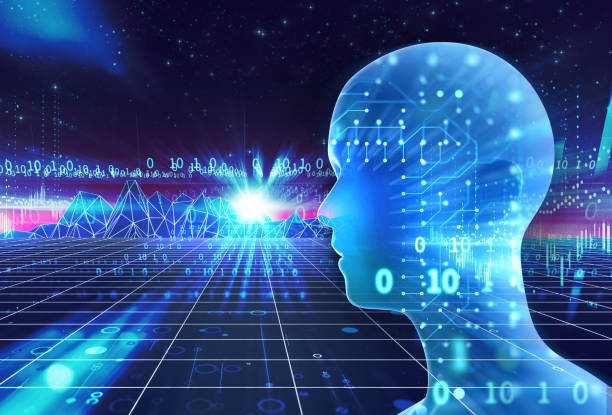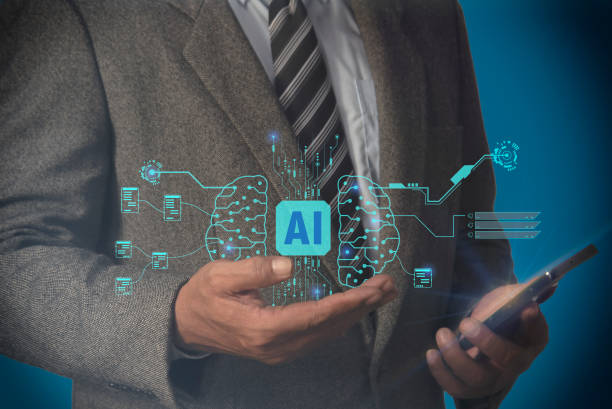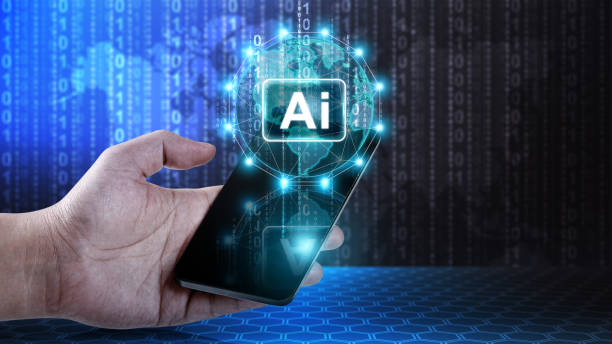What is an AI Robot and How Does it Work?

AI robots are a combination of robotics and artificial intelligence that enables machines to perform tasks that typically require human intelligence.
These robots, using complex algorithms and vast amounts of data, are capable of learning, reasoning, problem-solving, and decision-making.
#Machine_learning_algorithms and neural networks are the beating heart of these systems.
In other words, an AI robot is an artificial entity that can understand, learn, and act autonomously.
These robots can be employed in various fields including manufacturing, customer service, medicine, and education.
Artificial Intelligence (AI), as a branch of computer science, focuses on developing systems capable of performing tasks that require human intelligence.
Robots collect information from the environment using sensors and other input devices, and then process this information and make decisions using AI algorithms.
For example, an AI robot on a production line can use cameras and sensors to inspect product quality, detect defects, and remove faulty items from the line.
Or a robot in customer service can answer customer questions and resolve their issues.
Are you tired of losing business opportunities due to not having a professional company website?
Rasaweb helps you with professional company website design to:
✅ Build a powerful and reliable image for your brand
✅ Convert website visitors into loyal customers
⚡ Get a free consultation now!
History and Evolution of Smart Robots

The history of AI robots dates back decades, to when the idea of building machines that could think and act was first proposed.
Initially, this idea was largely a science-fiction concept, but with technological advancements and the development of AI algorithms, this idea became a reality.
Robots have evolved from simple automatic devices into complex entities capable of performing intricate tasks and interacting with humans.
The first AI robots were primarily used in industrial and manufacturing settings.
These robots performed simple, repetitive tasks, and gradually, with technological progress, more complex robots capable of performing a wider variety of tasks were developed.
In recent years, with the emergence of deep learning and neural networks, AI robots have reached a new level of capability and can perform tasks that previously seemed impossible.
Today, AI robots are used in various fields including medicine, education, transportation, and customer service, and are expected to play an even more significant role in our lives in the future.
Types of AI Robots and Their Applications
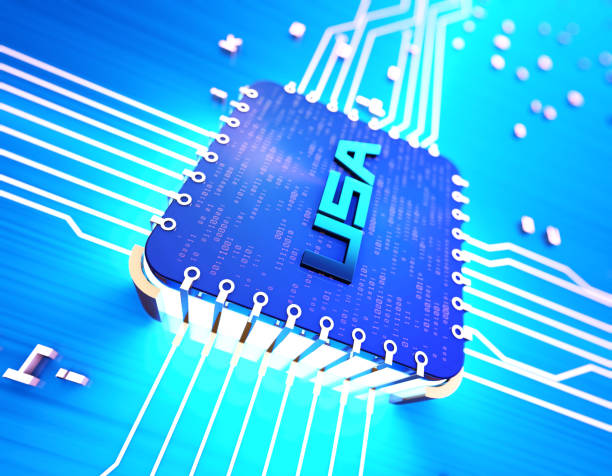
AI robots are categorized into different types based on their application and mode of operation.
Some of these robots are designed for specific tasks, while others are capable of performing a variety of tasks.
Generally, AI robots can be divided into the following categories:
- Industrial Robots These robots are used in production lines and factories for repetitive and dangerous tasks.
- Service Robots These robots are employed in various fields including customer service, medicine, and education.
- Military Robots These robots are used in military and security fields for dangerous and complex tasks.
- Space Robots These robots are utilized in space for scientific research and space exploration.
The applications of AI robots are vast and growing daily.
These robots can assist humans in various areas, including improving productivity, reducing costs, increasing accuracy and speed, and performing dangerous tasks.
| Robot Type | Application |
|---|---|
| Industrial | Production lines, repetitive tasks |
| Service | Customer service, medicine, education |
| Military | Dangerous tasks, security |
| Space | Space research, exploration |
Advantages and Disadvantages of Using AI Robots

The use of AI robots has its own advantages and disadvantages.
The benefits of using these robots include increased productivity, reduced costs, increased accuracy and speed, performing dangerous tasks, and improving quality of life.
For example, in industry, AI robots can work continuously without fatigue and improve product quality.
In medicine, these robots can perform more precise surgeries and assist in diagnosing diseases.
However, the use of AI robots also has disadvantages.
One major drawback is job displacement.
With the entry of AI robots into the job market, many jobs previously performed by humans are now being done by these robots.
Furthermore, ethical and security issues are also among the disadvantages of using AI robots.
For example, the use of AI robots in warfare could lead to civilian casualties, or hacking these robots could lead to their misuse.
Considering all aspects, AI robots must be used carefully and responsibly to leverage their benefits and prevent their drawbacks.
Large companies are making significant investments in this area to harness the potential of this technology.
Are you tired of your e-commerce website not generating as much revenue as it could? Rasaweb, specializing in professional e-commerce website design, solves this problem forever!
✅ Increase sales rate and revenue
✅ High loading speed and unparalleled user experience
⚡ Get a free e-commerce website design consultation
Challenges in Developing and Implementing Smart Robots
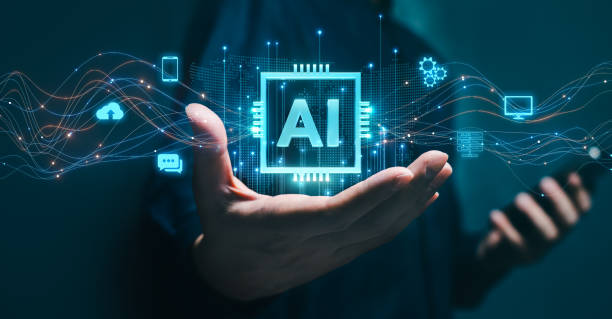
The development and implementation of AI robots face numerous challenges.
One of the main challenges is the collection and processing of vast amounts of data.
AI robots require extensive data for learning and performance improvement.
This data must be carefully collected and processed for the AI robot to function correctly.
Another challenge is the development of complex algorithms.
AI robots require complex algorithms to perform intricate tasks.
Developing these algorithms demands high levels of knowledge and expertise.
Ethical and security issues are also among the challenges in developing and implementing AI robots.
It must be ensured that these robots are used properly and do not harm humans.
Additionally, measures must be taken to prevent these robots from being hacked.
Furthermore, the high cost of developing and implementing AI robots is another major challenge.
Many companies and organizations are unable to develop and implement these robots due to high costs.
To overcome these challenges, cooperation and coordination among researchers, developers, policymakers, and the general public are needed.
Through collaboration and coordination, the benefits of AI robots can be realized, and their drawbacks can be mitigated.
What Will Be the Future of AI Robots?

The future of AI robots is very bright and full of potential.
It is predicted that in the future, these robots will play an even more significant role in our lives.
AI robots can be used in various fields including medicine, education, transportation, customer service, and manufacturing.
In medicine, these robots can perform more precise surgeries, assist in diagnosing diseases, and help in patient care.
In education, these robots can help students learn better and achieve their goals.
In transportation, AI robots can drive autonomous vehicles and help reduce accidents.
In customer service, these robots can answer customer questions and resolve their issues.
In manufacturing, these robots can help increase productivity and reduce costs.
With technological advancements, AI robots will be capable of performing more complex tasks and will reach a new level of ability.
However, it must also be noted that the development and implementation of AI robots require careful planning and management.
It must be ensured that these robots are used properly and do not harm humans.
How Far Have AI Robots Advanced in Iranian Industry?
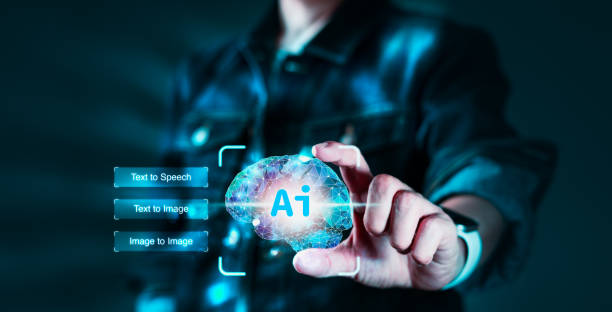
The AI robot industry in Iran is developing, but it still has a long way to go to catch up with advanced countries.
However, in recent years, significant progress has been made in this area.
Universities and research centers in Iran are conducting extensive research in the field of artificial intelligence and robotics, and knowledge-based companies are also developing and producing AI robots for various applications.
For example, some companies are developing AI robots for use in the oil and gas industry, while others are developing robots for use in agriculture and customer service.
The government is also supporting the development of the AI robot industry in Iran and has introduced programs to encourage investment in this area.
However, there are also numerous challenges in the path of this industry’s development.
One of the main challenges is the lack of investment and financial resources.
The development and production of AI robots require significant investments, and many companies and organizations in Iran are unable to do so due to a lack of financial resources.
Another challenge is the shortage of skilled labor.
The development and implementation of AI robots require high levels of knowledge and expertise, and in Iran, the number of specialists in this field is limited.
| Field | Application Example |
|---|---|
| Oil and Gas | Pipeline inspection, repairs |
| Agriculture | Crop harvesting, pesticide spraying |
| Customer Service | Answering questions, support |
| Industry | Production line automation, quality control |
Ethical Issues Surrounding Smart Robots
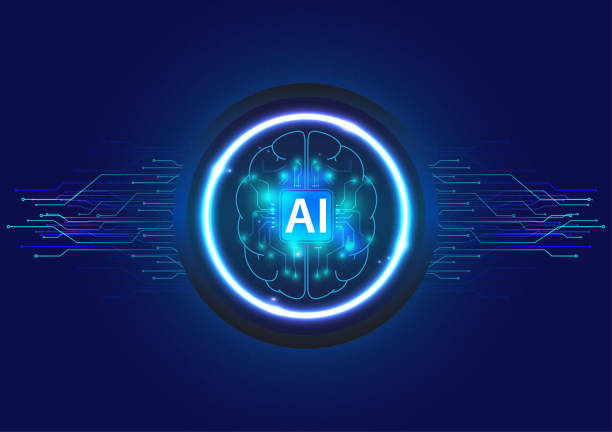
The development and use of AI robots raise several ethical issues.
One of the main issues is accountability.
If an AI robot makes a mistake or harms someone, who is responsible? The developer, the user, or the robot itself? This question still has no definitive answer and requires further discussion and examination.
Another issue is bias.
AI robots may unintentionally act discriminatorily due to the data they were trained on.
For example, an AI robot designed for hiring might unintentionally prefer individuals of a particular race or gender.
Privacy is another important ethical issue.
AI robots can collect a lot of information about individuals and use this information for various purposes.
It must be ensured that this information is properly protected and not misused.
Additionally, there are concerns about the replacement of humans by AI robots and job displacement.
Efforts must be made to develop this technology in a way that benefits all of society, not just a select few.
Finally, it must also be noted that the development and use of AI robots require careful consideration of ethical issues.
Efforts must be made to develop this technology in a way that respects human values and contributes to improving the quality of life.
Are you tired of your company’s website not being seen as it deserves, leading to lost potential customers? Solve this problem forever with professional and effective website design by Rasaweb!
✅ Increase brand credibility and gain customer trust
✅ Attract targeted sales leads
⚡ Contact us now for a free consultation!
How Smart Robots Learn and Are Trained

AI robots learn and are trained through various methods.
One of the main methods is machine learning.
In machine learning, an AI robot is trained using vast amounts of data and identifies patterns and relationships within this data.
This data can include images, text, audio, or sensor data.
Another method is reinforcement learning.
In reinforcement learning, an AI robot learns through trial and error, improving its behaviors by receiving rewards or penalties.
This method is highly useful for training AI robots to perform complex tasks such as video games or autonomous driving.
Furthermore, AI robots can also learn by imitating humans.
In this method, the AI robot observes human movements and behaviors and tries to mimic them.
This method is very useful for training AI robots to perform delicate and complex tasks such as surgery or cooking.
Generally, the way AI robots learn and are trained depends on the type of task they need to perform.
By choosing the appropriate method and using suitable data, AI robots can be trained to perform their tasks in the best possible way.
Advances in machine learning and deep learning have provided new possibilities for training AI robots.
Today, AI robots can be trained to learn and improve without the need for direct human supervision.
Key Considerations in Choosing and Using AI Robots
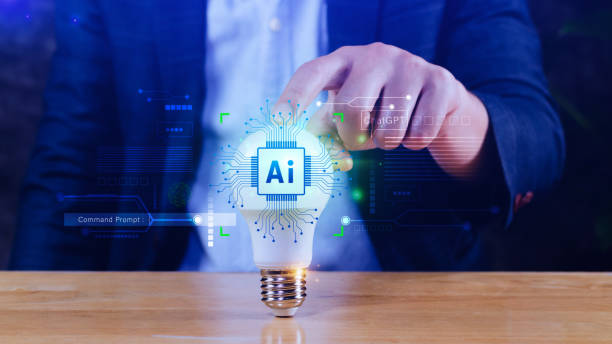
Choosing and using an AI robot requires attention to key considerations.
First and foremost, you must accurately define your needs.
What task do you want to assign to the AI robot? What are your expectations for it? By answering these questions, you can select the appropriate AI robot.
Another point is to consider the capabilities and limitations of the AI robot.
Every AI robot has its own specific capabilities and limitations.
You must ensure that the selected AI robot has the necessary capabilities to perform the desired task and that its limitations do not prevent the proper execution of the task.
Cost is also another important factor.
AI robots can be very expensive.
You must ensure that the cost of purchasing and maintaining the selected AI robot is compatible with your budget.
Additionally, you must also pay attention to security issues.
AI robots can be vulnerable and subject to hacker attacks.
You must ensure that the selected AI robot has appropriate security measures and can protect your information.
Finally, you must also consider training and support.
AI robots require training and support.
You must ensure that the manufacturer provides the necessary training and support.
By observing these key considerations, you can choose the right AI robot and use it most effectively.
Frequently Asked Questions
| Question | Answer |
|---|---|
| What is an AI robot? | An AI robot is a machine capable of understanding its environment, reasoning, learning, and making decisions to perform tasks autonomously. |
| What is the difference between conventional robots and AI robots? | Conventional robots perform repetitive tasks based on prior programming, whereas AI robots can learn from experience, interact dynamically with their environment, and even behave in a way that resembles human intelligence. |
| What are the main applications of AI robots? | They are used in industries (manufacturing, assembly), medicine (surgery, diagnosis), services (customer support, domestic), exploration (space, underwater), and many other fields. |
| What technologies are used in building AI robots? | Machine Learning, Computer Vision, Natural Language Processing, Deep Learning, and Robotics are among the key technologies. |
| Can AI robots have emotions? | Currently, robots do not have emotions in the human sense. They can identify and react to emotions, but they do not experience emotions themselves. |
| What are the main challenges in developing AI robots? | Safety, reliability, ethics, autonomy, adaptability to complex environments, and natural human interaction are significant challenges. |
| How are AI robots trained? | They are typically trained using large volumes of data, machine learning algorithms, and deep learning to identify patterns and make decisions. |
| Examples of AI robots in everyday life? | Smart robotic vacuum cleaners, customer support chatbots, self-driving cars, and surgical robots in hospitals. |
| Are AI robots a threat to human jobs? | Some repetitive jobs may become automated, but at the same time, robots can increase productivity and create new jobs in the development, maintenance, and supervision of these systems. |
| How is the future of AI robots predicted? | They are expected to become smarter, more autonomous, and capable of performing more complex tasks, engaging in closer interaction with humans in various environments. |
And other advertising services from Rasaweb Advertising Agency:
- Smart Sales Automation: Revolutionize online growth with intelligent data analysis.
- Smart Marketing Automation: A novel service to increase click-through rates through attractive UI design.
- Smart Website Development: A blend of creativity and technology for analyzing customer behavior by optimizing key pages.
- Smart Direct Marketing: Designed for businesses seeking to increase sales through the use of real data.
- Smart Direct Marketing: A fast and efficient solution for customer acquisition, focusing on intelligent data analysis.
And over a hundred other services in the field of internet advertising, advertising consulting, and organizational solutions.
Internet Advertising | Advertising Strategy | Advertorial
Resources
Comprehensive AI GuideApplications of Artificial IntelligenceAI Chatbot GuideAI in Industries
? Are you ready to transform your business in the digital world? At Rasaweb Afarin Digital Marketing Agency, with our expertise in user-friendly website design and comprehensive digital strategy implementation, we help you establish a powerful and effective online presence. From SEO and online advertising to social media management, we are your digital partner for achieving your goals.
📍 Tehran, Mirdamad Street, next to Bank Markazi, Kazeroun Jonoubi Alley, Ramin Alley, No. 6

